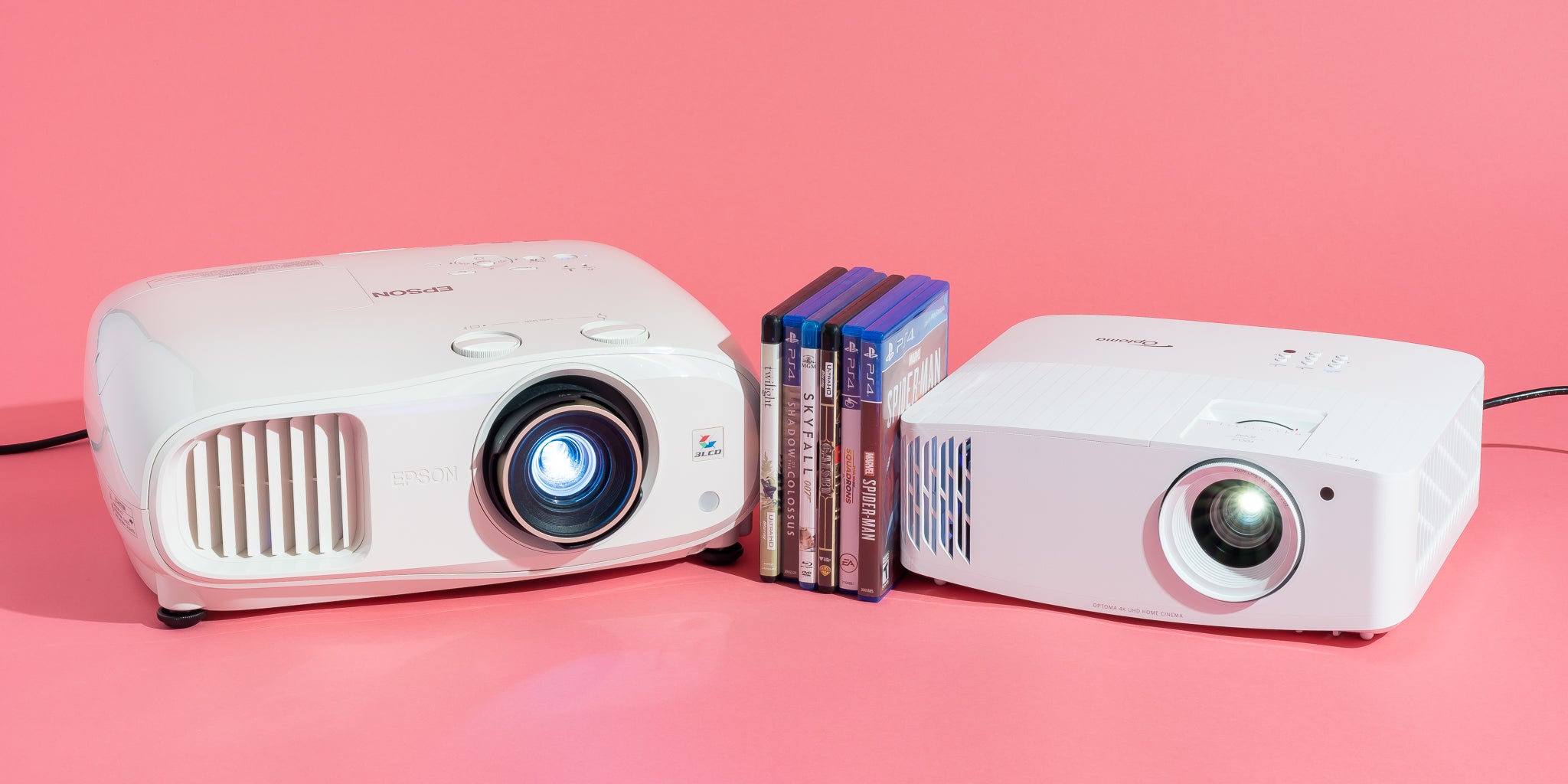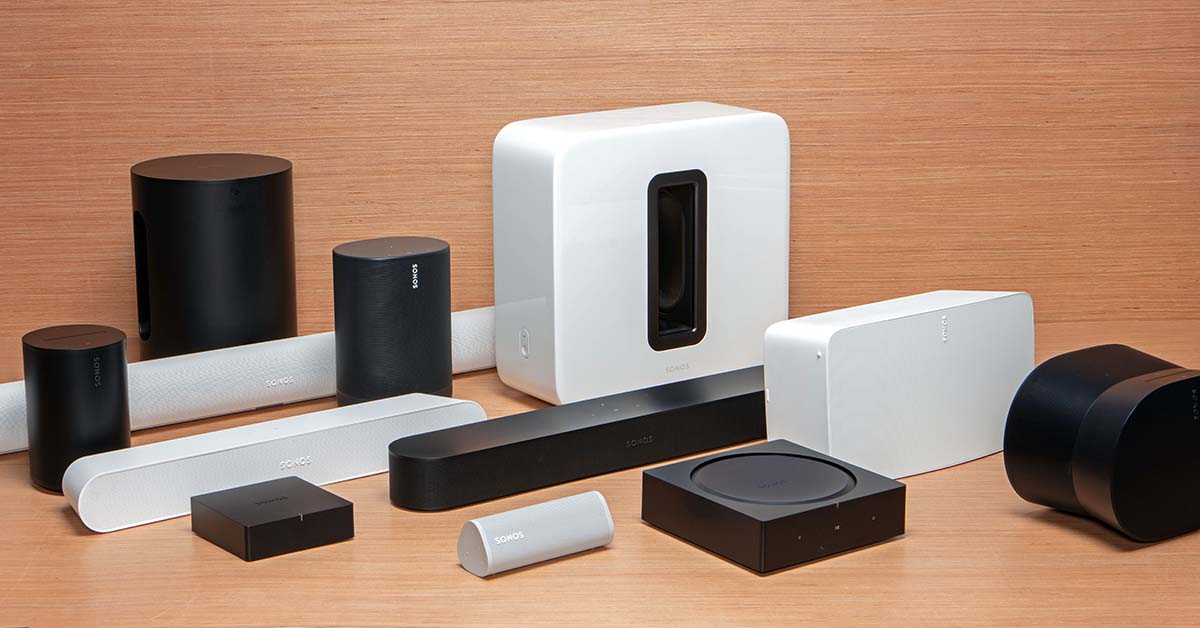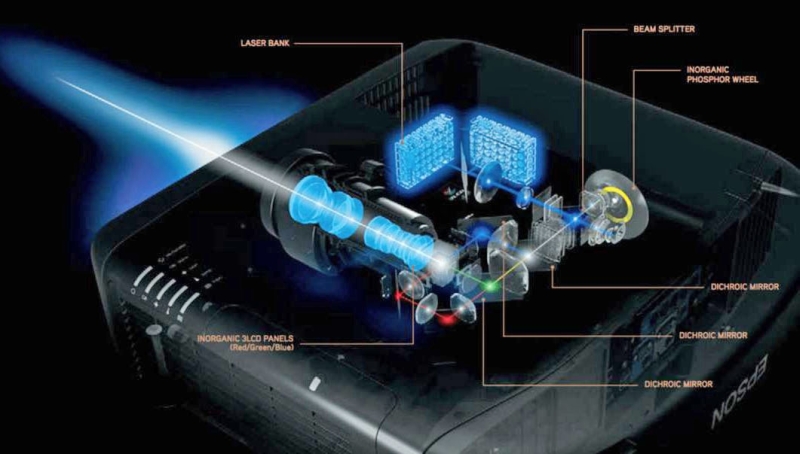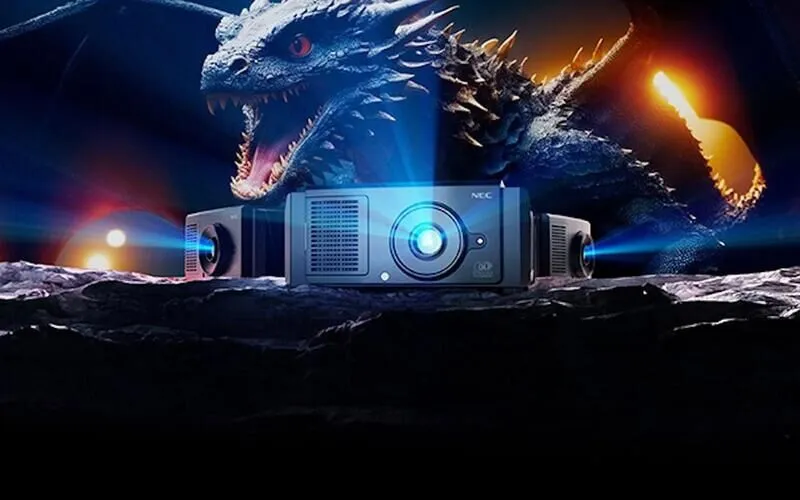The task of choosing between short throw vs long throw projectors for small rooms may seem overwhelming at first glance. Imagine transforming your small living space or home office into a cinematic hub with the right projector. As you navigate the realm of audiovisual technology, understanding the nuances between short throw and long throw projectors becomes paramount. Let's embark on a journey to uncover the best projector solution for your compact environment.
Understanding Short Throw and Long Throw Projectors
When choosing between short throw vs long throw projectors for small rooms, it's essential to grasp the differences between the two types of projectors.
Short Throw Projectors
Short throw projectors are designed to project large images from a short distance. Here are some key points to consider:
Ideal for small rooms with limited space for projection equipment.
Produce large images with minimal distance from the screen, reducing shadows and allowing for closer viewing.
Suitable for interactive applications and presentations in small meeting rooms or classrooms.
Long Throw Projectors
Long throw projectors project images over longer distances, offering distinct advantages for certain settings:
More flexibility in projector placement, making them suitable for larger spaces.
Better suited for projecting onto larger screens without compromising image quality.
Commonly used in auditoriums, theaters, and other large venues where the projector must be positioned farther from the screen.
In the next section, we will explore the factors that are crucial to consider when deciding which type of projector best fits your small room setup.
Factors to Consider for Small Rooms
When choosing between short throw vs long throw projectors for small rooms, several critical factors should guide your decision-making process.
Room Size and Layout Considerations
Assess the dimensions of your room to determine the available space for projector positioning.
Consider the layout of furniture and walls to optimize the projector placement for the best viewing experience.
Distance from Projector to Screen
Calculate the ideal projection distance based on the throw ratio of the projector and the desired screen size.
Ensure that the projector's throw distance aligns with the dimensions of your small room to avoid image distortion.
Ambient Light in the Room
Evaluate the amount of natural and artificial light in the room to choose a projector with the appropriate brightness level.
Opt for projectors with higher lumens for rooms with excessive ambient light to maintain image clarity and vibrancy.
Considering these factors will help you make an informed decision on whether a short throw or long throw projector is the right choice for your small room setup.
Advantages of Short Throw Projectors for Small Rooms
When choosing between short throw vs long throw projectors for small rooms, short throw projectors offer unique benefits that cater to compact spaces effectively.
Space-saving Benefits
Short throw projectors require minimal distance between the projector and the screen, making them ideal for small rooms with limited space.
They eliminate the need for a far projection distance, maximizing room space for other furniture or accessories.
Short throw projectors contribute to a clean and uncluttered setup compared to long throw projectors that may require more room for projection distance.
Reduced Shadows and Glare
In small rooms, the proximity of a short throw projector to the screen minimizes shadows and glare, enhancing the viewing experience.
Users can sit closer to the screen without obstructing the projected image, ensuring a more immersive viewing environment.
The reduced distance between the projector and screen diminishes the chances of shadows caused by objects or individuals in the room.
Ideal for Small Viewing Distances
Short throw projectors are optimized for close viewing distances, making them perfect for small rooms where viewers may be situated nearby.
They deliver sharp and clear images even in confined spaces, maintaining image quality without the need for large projection distances.
Short throw projectors create a more intimate viewing atmosphere, suitable for home theaters or compact entertainment setups in small rooms.
Considering these advantages, short throw projectors present compelling reasons to be the preferred choice for enhancing the audiovisual experience in small room environments.
Advantages of Long Throw Projectors for Small Rooms
In the debate of choosing between short throw vs long throw projectors for small rooms, long throw projectors offer distinct advantages that may align better with specific room setups.
Greater Flexibility in Projector Placement
Long throw projectors allow for more flexibility in positioning, making them suitable for larger rooms where the projector needs to be situated farther from the screen.
They provide the freedom to adjust the projector placement to achieve the optimal image size and focus.
Long throw projectors can project onto larger screens without compromising image quality, ideal for creating immersive viewing experiences in spacious areas.
Better Suited for Larger Screen Sizes
For small rooms where a larger screen size is desired, long throw projectors excel in delivering clear and detailed images on expansive screens.
They are capable of projecting images at greater distances without sacrificing brightness or resolution.
Long throw projectors are commonly used in professional settings like conference rooms or multimedia classrooms that require a larger display area.
Potential Cost Savings
While long throw projectors may have higher upfront costs, they can offer cost savings in the long run by providing durability and performance advantages.
Investing in a long throw projector tailored to a small room's requirements can lead to fewer maintenance and replacement expenses over time.
The long-term benefits of using a high-quality long throw projector may outweigh the initial investment, particularly for users seeking reliability and longevity in their audiovisual setup.
In certain scenarios, long throw projectors present compelling reasons to be considered when outfitting small rooms with projector systems.
Comparison of Image Quality
When faced with the decision of choosing between short throw vs long throw projectors for small rooms, assessing the image quality each type offers is crucial to making an informed choice.
Contrast Ratio and Brightness Considerations
Short throw projectors typically provide higher contrast ratios, resulting in deeper blacks and better image clarity.
Long throw projectors may offer higher brightness levels, making them suitable for rooms with ambient light or larger screen sizes.
Image Sharpness and Clarity
Short throw projectors excel in producing sharp images with minimal distortion, especially at close viewing distances.
Long throw projectors can maintain image sharpness even at greater projection distances, ensuring clarity across the projected surface.
Color Accuracy and Vibrancy
Short throw projectors often deliver vibrant colors and accurate color reproduction, enhancing the visual experience for viewers.
Long throw projectors can preserve color accuracy across larger screen sizes, maintaining consistency in color presentation for a broader audience.
For those prioritizing image quality in their small room projector setup, understanding the differences in contrast, sharpness, and color representation between short throw and long throw projectors is essential to selecting the ideal option.
Installation and Setup Considerations
In the process of choosing between short throw vs long throw projectors for small rooms, understanding the installation and setup requirements for each type is essential for a seamless audiovisual experience.
Mounting Options for Short Throw Projectors
Short throw projectors often come with ceiling mount, wall mount, or tabletop installation options to suit different room configurations.
Ceiling mounts are ideal for maximizing floor space in small rooms, while wall mounts offer flexibility in projection angles.
Tabletop mounts provide a portable setup that can be easily repositioned as needed.
Projection Angles and Adjustments
Short throw projectors may require precise alignment and angle adjustments to ensure optimal image projection.
Users should consider the projector's throw range and angle capabilities to achieve the desired image size and clarity.
Adjusting the projector's tilt and keystone correction settings can help eliminate distortion and ensure a properly aligned image.
Cable Management Solutions for Small Rooms
Organizing cables and cords is essential for maintaining a tidy and safe small room environment.
Utilize cable clips, raceways, or cable sleeves to secure and conceal cables along walls or ceilings.
Consider investing in wireless projection solutions to minimize cable clutter and simplify the setup process.
Taking into account these installation and setup considerations will help users seamlessly integrate their chosen projector type into their small room setup for an optimized viewing experience.
Budget Considerations
When choosing between short throw vs long throw projectors for small rooms, budget considerations play a significant role in determining the most suitable option for your audiovisual setup.
Cost Differences Between Short Throw and Long Throw Projectors
Short throw projectors typically come at a higher price point due to their specialized optics and technology for short-distance projection.
Long throw projectors may offer more budget-friendly options, especially for users not requiring the precision of short throw projection.
Additional Accessories or Features to Factor In
Consider additional costs for accessories such as mounts, screens, cables, and sound systems when planning your projector setup.
Some projector models may come with built-in features like keystone correction, lens shift, or smart connectivity, adding to the overall cost.
Long-term Maintenance and Replacement Costs
Evaluate the maintenance requirements and potential longevity of your chosen projector type.
Long throw projectors may require less frequent maintenance and have longer lifespans, potentially reducing replacement costs over time.
By factoring in the initial investment, additional accessories, and long-term maintenance expenses, users can make an informed decision on the most cost-effective projector option for their small room audiovisual needs.
Making the Right Choice
When it comes to choosing between short throw vs long throw projectors for small rooms, making an informed decision requires careful consideration of several key factors tailored to your specific needs and room setup.
Assessing Your Specific Room Requirements
Evaluate the size, layout, and lighting conditions of your small room to determine the ideal projector type.
Consider the available mounting options, projection distance, and viewing angles that best suit your room configuration.
Weighing the Pros and Cons of Each Projector Type
Compare the benefits and limitations of short throw and long throw projectors based on your room size and viewing preferences.
Consider factors such as space-saving features, image quality, installation requirements, and long-term affordability.
Key Takeaways for Choosing the Best Projector for Your Small Room
Prioritize factors such as image quality, practicality, budget, and room compatibility when selecting a projector.
Seek expert advice and reviews to gain insights into the performance and suitability of different projector models for small room setups.
By carefully evaluating your specific room requirements, weighing the pros and cons of short throw and long throw projectors, and emphasizing key considerations, you can confidently make the right choice for enhancing your small room audiovisual experience.
Case Studies: Real-Life Examples
Real-life experiences and case studies offer valuable insights into the practical application of choosing between short throw vs long throw projectors for small rooms. Let's delve into some scenarios to understand how different projector types perform in small room setups.
User Experiences with Short Throw Projectors in Small Spaces
Case Study 1: Emily, a small apartment dweller, opted for a short throw projector to enjoy a cinematic experience in her cozy living room. The minimal projection distance allowed her to achieve a large image size without compromising space.
Case Study 2: Michael, a teacher in a compact classroom, integrated a short throw projector to engage his students with interactive learning materials. The reduced shadows and glare enhanced visibility for all students, creating an immersive educational environment.
User Experiences with Long Throw Projectors in Small Spaces
Case Study 1: Sarah, a home theater enthusiast with a dedicated media room, selected a long throw projector to project onto a larger screen for a theatrical viewing experience. The flexibility in placement options allowed her to customize the setup to match her room size.
Case Study 2: David, a professional presenter in a small meeting room, utilized a long throw projector for corporate presentations. The projector's ability to project at greater distances enabled clear image delivery to all meeting participants.
By exploring these case studies, we can gain practical insights into how short throw and long throw projectors perform in real-life small room environments, helping us make informed decisions based on actual user experiences.
FAQ: Short Throw vs Long Throw Projectors for Small Rooms
1. Are short throw projectors suitable for small rooms with limited space?
Short throw projectors are ideal for small rooms with constrained space. Their ability to project large images from a short distance minimizes shadows and allows for a more compact setup, making them a popular choice for smaller environments.
2. Do long throw projectors work well in small rooms with close viewing distances?
Long throw projectors can be effective in small rooms, even with close viewing distances, as they offer greater flexibility in projector placement. Users can position long throw projectors farther back to achieve larger screen sizes while maintaining image quality.
3. How do short throw projectors compare to long throw projectors in terms of image quality?
Short throw projectors excel in producing sharp and clear images, especially at close range, thanks to their specialized optics. On the other hand, long throw projectors maintain image sharpness even at greater projection distances, making them suitable for larger screen sizes.
4. What budget considerations should be kept in mind when choosing between short throw and long throw projectors for small rooms?
Short throw projectors often come at a higher price due to their advanced technology for short-distance projection. Long throw projectors may offer budget-friendly options, making them a practical choice for users with cost considerations.
5. How can users determine the best projector type for their small room setup?
To select the most suitable projector, users should assess their room size, layout, viewing preferences, and budget constraints. Evaluating factors such as space-saving benefits, image quality, installation requirements, and long-term affordability will guide users to make the right decision for their small room audiovisual setup.




